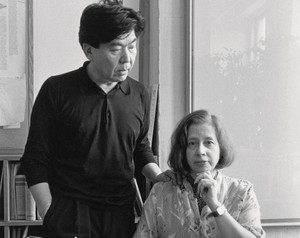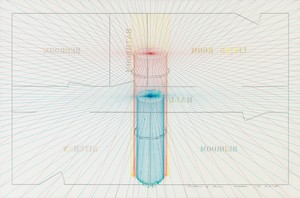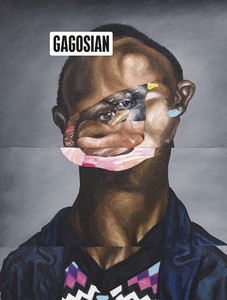
Losing Nothing: Arakawa and Madeline Gins
Mary Ann Caws reflects on the centrality of perception and imagination in Arakawa’s art, from his early diagrammatic paintings to his later architectural investigations with Madeline Gins.
Arakawa (born Shusaku Arakawa in 1936, in Nagoya, Japan) was one of the earliest practitioners of the international conceptual art movement of the 1960s, working within the mediums of painting, drawing, and printmaking. The work of Arakawa is now represented by Gagosian.
Arakawa attended the Musashino Art University in Tokyo before moving to New York from Japan in 1961. Following his arrival, Arakawa began producing diagrammatic paintings, drawings, and other conceptual works that employed systems of words and signs to both highlight and investigate the mechanics of human perception and knowledge.
In 1962, he met his future wife and collaborator—poet, writer, and philosopher Madeline Gins. They were married in 1965 and worked closely together in the years following. In subsequent decades Arakawa continued to exhibit at museums and galleries extensively throughout North America, Western Europe, and Japan with works that grew in scale and visual and intellectual complexity.
In the 1990s, Arakawa and Gins developed the theory of “procedural architecture” to further the impact of architecture on human lives. Through architecture specifically, they endeavored to “learn how not to die,” a concept that they termed “reversible destiny,” believing firmly that the architectural works they created would have an impact on the personal well-being and longevity of those who lived within them.

Mary Ann Caws reflects on the centrality of perception and imagination in Arakawa’s art, from his early diagrammatic paintings to his later architectural investigations with Madeline Gins.

The influential work of the Japanese-born artist Arakawa—who forged prescient and crucial links between Dadaism, abstract art, Minimalism, conceptual art, Pop art, and more—explored by David Colman.

The Fall 2019 issue of Gagosian Quarterly is now available, featuring a detail from Sinking (2019) by Nathaniel Mary Quinn on its cover.
The exhibition Arakawa: Diagrams for the Imagination receives a closer look by Gagosian director Ealan Wingate. In this video, he discusses the artist’s arrival in New York and examines the importance of maps and language in Arakawa’s work.